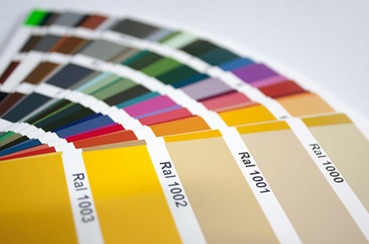
House painting in Danville doesn’t only involve dabbing the walls with paint. There is so much work to be done here, which includes preparing the surface. It can be tedious and you may feel not so thrilled to do this part and instead you’re raring to hold the paint brush right away.
But hold it! Even though preparation of the surface isn’t every seasoned house painter’s favorite part, they otherwise understand that it is the essence of every painting project. Consider these points about the importance of prepping before painting:
- Prepping keeps the surface clean and free from dust, dirt, mildew, rust marks, etc.
- Prepping allows for the repair of a damaged surface that ranges from flaking paint to noticeable cracks.
- Prepping reduces the need for additional paint and/or sealant, therefore saving you some money.
- And most importantly, prepping enables the primer and the topcoat to adhere more effectively to the surface, therefore ensuring quality results to your painting job.
In other words, you cannot skip this part if you want to have excellent results in your paint job, whether you are doing an interior or exterior painting job.
We take the interior painting job as an example. Prepping for an interior painting job involves some other things aside from tending the surface itself.
1. Clearing and covering the space
You don’t want the floor, your precious furniture pieces, and fixtures to be dripping with paint, so it’s a good idea to take out the furniture and to remove the fixtures and hardware (such as hooks on the wall, doorknobs, and switch plate covers). It will also leave you with more room to move around while doing your work. If you cannot remove the furniture (because it is too heavy or bolted on the floor) cover them with plastic or canvas drop cloths. For door hardware, cover them with tape or a plastic bag.
2. Cleaning the surface
Unlike the exterior walls, interior walls are generally not as dirty, so a damp cloth will suffice in wiping away dust and dirt. For kitchen walls that may have accumulated oil and grime, you may need a TSP solution or a laundry detergent.
If you live in an area that tends to be damp, check the walls to see any signs of molds and mildew. In case you have found them growing on the walls, make a solution consisting of 1 part bleach and 3 parts water and apply it on the affected area, and then scrub it using a stiff-bristled brush. Rinse the surface and let it dry completely. You can also apply a commercial mildewcide and then scrub off the affected area using a stiff brush.
A vacuum fitted with a pipe extension is a faster way of sucking in dust and dirt from baseboards, trim and molding.
3. Removing flaking or peeling paint
Gently scrape off any flaking or peeling paint with a metal paint scraper. Then sand the surface to make it smooth again. Remember, do this only if the existing paint peels off. If the rest of the paint otherwise stays on the surface, no need to scrape it off.
In case you’ve found other problems like plaster bumps, simply use sandpaper to remove them and make the surface smooth again.
4. Repairing surface flaws
For cracks and holes found on the surface, fill them with a drywall compound, leave it to dry, and then sand the surface to smoothen it. If necessary, fill the same affected area again but make sure not to overfill it in order to avoid excessive sanding.
5. How to know if it’s oil paint or latex paint?
This tip is especially ideal for a repainting job. Unless you are sure what type of paint that’s currently on the surface and you know which type of new paint to buy, you should check the surface first to determine if it’s painted with latex or oil-based paint. Wet a cotton swab with alcohol, and rub it on the surface. If the cotton ends up with stains, it’s latex and you should buy a new latex paint for re-painting. If the cotton comes clean, it’s oil-based and therefore you should buy an oil-based paint.
6. Applying primer
A primer is necessary only for certain situations:
- Bare wood or drywall.
- Ceramic tile, vinyl and other glazed and glossy surfaces. A bonding primer is recommended for such surfaces.
- A stained surface.
- A surface that has been repaired.
- Radical color changes, especially if you decide to apply a light-colored paint over an existing darker paint.
Apply a primer and let it completely dry. This will help the topcoat stick more effectively on the surface. A primer also helps in keeping out many kinds of stains from bleeding through the topcoat.
7. Tape it
Protect other areas you don’t want to paint such as door and window frames, trim, baseboards, and molding with a painter’s tape before painting.
Then you’re ready to paint!
You may not need to do a major prepping or cleaning in certain areas:
- Surfaces that are relatively clean
- Low-traffic rooms such as bedrooms.
- Ceilings
However, if the surface hasn’t seen new paint in years, has accumulated dirt over time and acquired some noticeable damage, then it calls for surface preparation. Remember, a successful house painting in Danville lies in the proper cleaning and preparation of the walls.

